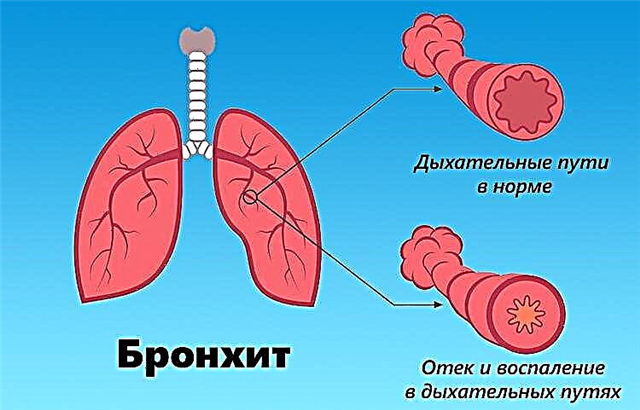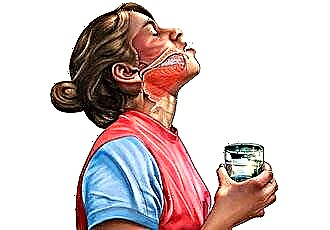Wheezing in the throat of a child makes parents seriously worry - why they appeared, is there a threat to health, and most importantly - how to treat a hoarse throat in a child.
 First, the concept of "wheezing" and "hoarseness" should be distinguished.
First, the concept of "wheezing" and "hoarseness" should be distinguished.
Wheezing in medicine is a pathological noise that accompanies a breathing act, while hoarseness is a change in the timbre of the voice associated with damage to the vocal cords.
Wheezing occurs in various diseases of the lower respiratory tract, such as pneumonia. In addition, wheezing is observed in some cardiovascular diseases, allergies, etc.
Hoarseness (i.e. hoarseness, or hoarseness of the voice) usually occurs when the vocal cords located in the larynx are dysfunctional. The most common cause of hoarseness is laryngitis, an inflammation of the larynx caused by an infection. The state of the vocal cords is negatively affected by their overstrain - prolonged screaming, loud singing, etc.
Let's talk about how to treat wheezing in a child's throat, which appears when breathing or during a conversation.
Laryngitis is the cause of wheezing and coughing
If a child has a wheezing throat when talking, most likely he has laryngitis - an acute inflammation of the larynx. The larynx is the airway located between the pharynx and the trachea. It is in the larynx that the human vocal apparatus is located, and therefore the inflammation of this organ inevitably leads to a change in the timbre of the voice.
Symptoms of laryngitis in adults and children:
- hoarseness, hoarseness of the voice, and in some cases - its almost complete loss (the patient can only speak in a whisper);
- dry, sore throat;
- if the infection is localized on the back of the larynx, the patient may complain of pain when swallowing;
- labored breathing;
- in the first days of the illness - a dry cough, which then turns into a wet cough;
- cough worries mainly at night and after waking up;
- moderate increase in temperature (37-37.5C);
- fatigue, headache.
In most cases, the cause of laryngitis in children is an acute respiratory viral infection (ARVI). The development of the disease is facilitated by mouth breathing in the cold season, breathing polluted air, as well as physical overstrain of the vocal cords - screaming, loud laughter, etc.
Laryngitis is not always caused by ARVI. Inflammation of the larynx can be part of the clinical picture of other infectious diseases - whooping cough, measles, influenza, diphtheria, etc.
Laryngitis treatment
What to do if a child has a hoarse throat? First, it should be explained to the sick person that he should give rest to the vocal cords. It is necessary to refrain from talking for 4-7 days until the voice device is fully restored. If there is a need to say something, it is better to speak quietly, but not in a whisper (when whispering, the vocal cords are even more tense than during normal conversation).
It is recommended to exclude spices, spicy foods, pickles and other irritating foods from the patient's diet. Drinks and food should be at a comfortable temperature - not hot or cold.
Despite the discomfort when swallowing, a sick child must eat well in order to provide the body with the necessary vitamins and nutrients.
Especially useful are warm drinks - herbal teas with honey, non-acidic fruit drinks, warmed milk, etc.
Therapeutic procedures recommended for laryngitis:
- gargling with warm water with the addition of soda;
- rinsing with decoctions of medicinal plants;
- warm steam inhalations (with eucalyptus essential oil, soda, chamomile and other antiseptic substances);
- dry heat - a compress on the neck, a warm scarf, etc.;
- with severe symptoms of intoxication (high
 temperature, headache, etc.) requires antiviral drugs, as well as antipyretic drugs.
temperature, headache, etc.) requires antiviral drugs, as well as antipyretic drugs.
Among antipyretics, paracetamol and preparations based on it (for example, Panadol) are most suitable for children.
The temperature should not be brought down if it does not reach 38 C.
Laryngitis usually responds well to treatment. If the recommendations are followed, the patient's condition improves significantly on the 4th-5th day of illness, and by the 7th day, complete recovery occurs.
Wheezing in the throat when breathing
Wheezing in the throat during breathing appears in various diseases associated with the respiratory system. Typically, wheezing, whistling, and other breathing noises occur when the lumen of the upper or lower airways narrows. Narrowing of the airway lumen is the result of mucus accumulation, bronchospasm, edema of the mucous membrane. In particular, wheezing during breathing is observed in diseases such as:
- bronchial asthma;
- whooping cough;
- bronchitis;
- pneumonia;
- laryngitis;
- respiratory allergic reaction.
To determine the causes of the disease, it is necessary to take into account the accompanying symptoms - the level of body temperature, the presence or absence of a runny nose, cough, as well as the conditions under which the child begins to wheeze.
In young children, sudden wheezing when breathing may indicate that foreign bodies or large amounts of dust have entered the airway.
If wheezing when breathing is accompanied by signs of choking, call an ambulance immediately. The child may have accidentally inhaled a small object or choked.
Wheezing in the throat in infants
 Wheezing without coughing in an infant may be associated with normal physiological processes, for example:
Wheezing without coughing in an infant may be associated with normal physiological processes, for example:
- in newborns, the throat may wheeze for a while, since the cartilage of the larynx is not yet sufficiently developed and elastic;
- at 4-5 months of life, the baby's salivary glands begin to work actively, because of which he can cough and wheeze in his throat;
- teething is accompanied by increased production of saliva, as well as swelling of the oropharynx, which often causes wheezing;
- with prolonged crying and crying, the vocal cords of the baby are overstrained, as a result of which the voice may become hoarse for a while.
However, any violations of the infant's respiratory system require increased attention from parents.
In infants, the airways are narrow, making them more likely to wheeze. For the same reason, infants have a much higher risk of suffocation with laryngitis, whooping cough, and even sore throat.
Babies, as well as adults, can suffer from laryngitis, bronchitis and other acute respiratory infections. In this case, the child has wheezing in the throat, the body temperature rises, and a wet cough is observed.
Very often, inflammation of the larynx or lower respiratory tract in infants is accompanied by a runny nose with profuse sputum production. In this case, it is necessary to achieve cleansing of the respiratory tract from mucus so that the child can breathe normally. To do this, it is recommended to drip drops based on seawater into the child's nose - they thin the phlegm and promote its discharge. For infants, "Aqualor Baby", "Nazol Baby" are suitable.
Nevertheless, it is far from always possible to achieve restoration of nasal breathing with the help of water-salt drops. If the child's nose is blocked, vasoconstrictor drops will help - they relieve swelling of the nasopharyngeal mucosa, expanding the lumen of the nasal passages. Vibrocil vasoconstrictor drops are allowed for infants.
To restore normal breathing, it is necessary to maintain optimal humidity and air temperature.
In hot and dry rooms, the phlegm in the airways dries up to form crusts, making the baby's breathing noisy.
Stridor in newborns and infants
Another reason why the child has wheezing in the throat when breathing is stridor. Stridor is called abnormal noisy breathing, accompanied by wheezing or whistling.Stridor can be caused by anatomical abnormalities in various parts of the respiratory tract, primarily the larynx and epiglottis.
In most cases, stridor in children of the first year of life is associated with laryngomalacia - falling into the lumen of the larynx of the cartilage of the epiglottis or arytenoid cartilage.
Laryngomalacia is a congenital pathology caused by insufficient hardness of cartilage tissue. Usually the disease manifests itself in the first week of life, but sometimes its first symptoms appear in children aged 1-2 months. A characteristic sign of laryngomalacia is increased wheezing in the supine position. Also, the child begins to wheeze during prolonged screaming and laughter, during active games. It is known that boys suffer from laryngomalacia 2-3 times more often than girls.
The prognosis of stridor due to laryngomalacia is favorable in most cases. Symptoms of the disease disappear by reaching 1.5-2 years of age due to spontaneous compaction of cartilaginous tissue.
In rare cases, to restore the normal functioning of the vocal apparatus, the child is shown surgical intervention (removal of sagging fragments of cartilaginous tissue using a laser).
Final recommendations
In the vast majority of cases, hoarseness in a child appears as a result of a cold laryngitis. However, parents should be careful - the disease that they mistook for laryngitis may turn out to be whooping cough, croup and other dangerous diseases.
In what cases it is necessary to call a doctor:
- the symptoms of the disease do not disappear for 10 days or more;
- there are blood impurities in the coughing up sputum or
 pus;
pus; - there was a sharp sharp pain in the throat;
- symptoms of suffocation appeared;
- you find a rash in the mouth or on the patient's skin (a sign of measles, scarlet fever);
- the child wakes up from bouts of severe coughing (typical for whooping cough, false croup);
- body temperature exceeds 39 C.
Warm humid air helps to quickly relieve breathing and soften wheezing. Steam inhalation with mineral water, let your child drink warm tea.
To prevent inflammation of the larynx, avoid physical overstrain of the child's vocal cords, breathing polluted air and hypothermia.

 temperature, headache, etc.) requires antiviral drugs, as well as antipyretic drugs.
temperature, headache, etc.) requires antiviral drugs, as well as antipyretic drugs. pus;
pus;

